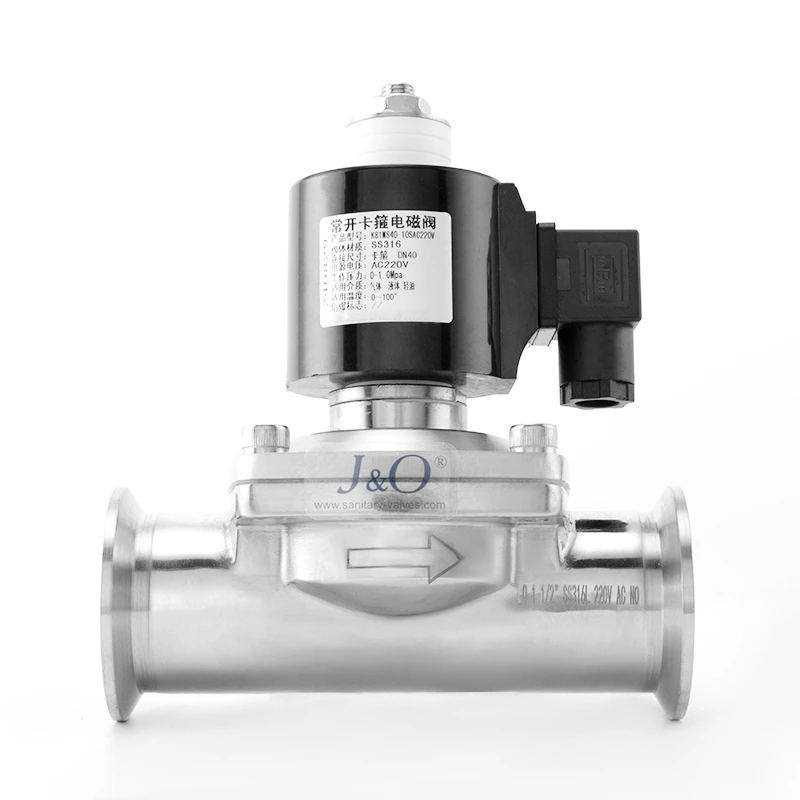What Type Of Valve Does The Sanitary Diaphragm Valve Belong To? How To Choose It Correctly?
Which type of valve does Sanitary Diaphragm Valve belong to? How to choose it correctly?
tri clamp diaphragm valve are clamping valves, which are mainly used for opening and closing on pipelines.
3 way sanitary diaphragm valve have two main advantages:
First, the valve does not require a separate valve stem packing sealing structure. The diaphragm seals the valve stem while cutting off the medium.
Second, the diaphragm with strong flexibility can close reliably and even cut off dirty liquids. Therefore, the operating mechanism and the medium channel are completely separated, making the diaphragm valve not only suitable for the food industry and the medical and health industry, but also for some difficult-to-transport media and dangerous media.
Usually, it is recommended to use diaphragm valves when the use conditions require strict sealing performance, mud media, wear, light structure, low pressure cutoff (small pressure difference), small leakage to the atmosphere, and abrasive media. Diaphragm valves can be used in double-position adjustment, throttling, channel shrinkage, low noise, cavitation and vaporization, and small operating torque. Diaphragm valves are not used in the conditions of high temperature medium, high pressure medium, high pressure cut-off (large pressure difference), fast opening and closing action, and short structure length, except for metal diaphragm valves.
Due to the structural design of the diaphragm valve itself, it is particularly suitable for ultra-pure media or heavily polluted, very viscous liquids, gases, corrosive or inert media. When combined with control equipment, diaphragm valves can replace other traditional control systems, especially for solid and easily contaminated inert media. The products are mainly used in biopharmaceutical, food, and industries; as well as industrial water treatment in power, chemical, electroplating, and other industries, and are also used in the production of semiconductor wafers. Diaphragm valves are particularly suitable for transporting corrosive and viscous fluids, such as mud, food, medicine, and fibrous adhesives. Because the operating mechanism of the hygienic diaphragm valve in the pipeline is not exposed to the transported fluid, it is not polluting, does not require packing, and the valve stem packing part is unlikely to leak.
The structural feature of the metal tank bottom diaphragm valve is that a group of thin hemispherical metal films are clamped in the valve body as a barrier between the valve stem and the fluid. The valve is closed by the valve stem head and the metal film pressing the valve disc against the valve seat. The valve is opened by an internal spring. When the valve stem rises and leaves the contact with the film, the valve disc rises. Since the valve stroke is equal to the film stroke, the characteristic lift of this valve is much smaller than that of ordinary valves. In order to overcome the resistance loss caused by low lift, the valve seat and flow area are larger than those of ordinary valves, in order to obtain a larger flow rate. Since the valve seat of this valve is larger, its force is much greater than that of ordinary valves, so as to obtain sufficient sealing force on the valve disc, because there is no direct contact between the valve stem and the valve disc. The valve disc will not leave the valve seat through the valve stem, so this valve is suitable for unidirectional flow with pressure difference, and the medium usually comes from "under the valve seat". However, a large amount of backflow should be avoided during use to avoid affecting the closing of the valve. Generally speaking, it is economical and effective to use metal diaphragm valves under high temperature and high pressure. This valve can also be used in low temperature and low pressure occasions where synthetic rubber diaphragm valves are not desired.
